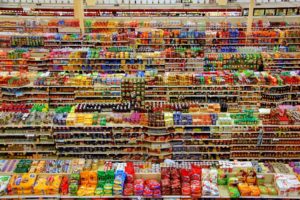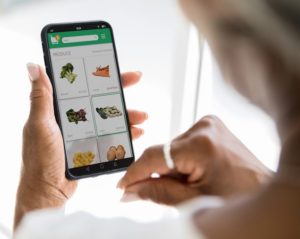Product packaging is truly the cornerstone of how a brand reaches the shopper. Purchasing decisions are made off of the information that lives on the package, and entire marketing campaigns can be dedicated to drawing a shopper into a specific section of the store. However, in an endless virtual aisle, the shopper experience is completely different.
There are no packages to pick up and inspect, or colours to draw you in from another side of the store. Instead the search bar becomes your shopping cart to help you navigate through, but the only problem is that you’re looking to find a product that fits your needs and instead are being dumped into an endless category of items that may or may not be best for you. When you do find an item you like, you enter it’s product page, the same way you’d turn the package, to understand if it’s optimal for you.
Online product data is now just as important as physical package label information. A shopper cannot discover your products if they aren’t coded for every relevant search term. Incomplete or inaccurate product information could pose a health risk and reduce brand trust. And the amount of product data needed to support an efficient and delightful online grocery shopping experience is simply not available as fast as it’s needed. The average product undergoes a packaging update three to four times a year, and the corresponding product data could take four months to refresh on the digital shelf. However, CPG Brands often have hundreds or thousands of SKU’s to manage, making the task of getting product information online cumbersome at best.
For the problem of speed, accuracy, and scale, the industry will need to turn toward technology that can intermingle with their single source of truth. Package label information needs to be read, understood, and communicated for the digital space in real-time. Computer Vision, artificial intelligence that understands the visual world, and Optical Character Recognition have seen enormous breakthroughs in the last decade. However, out-of-the-box solutions are often error-prone and lead to inaccurate results. Applying custom Machine Learning models, with a meticulous focus on accuracy, can solve these problems.

However maintaining a vigilant focus on specific types of product images (e.g. Marketing Images, Packaging Flats, Nutrition Labels) can achieve a very high level of accuracy with custom Machine Learning models. Combined with Natural Language Processing, a method for computers to understand and analyse large amounts of language data, a Computer Vision model can capture package label information quickly, and organise the information into easily usable data for eCommerce teams to deliver on a true omnichannel experience.
CPG Brands need accurate data to represent themselves on the digital shelf. Retailers need complete and rich data to power the online shopping experience, and online grocery shoppers just need all the right information to fulfil their needs. What’s next in online grocery commerce will require vast amounts of data, and fast. Soon, you might be able to tell your connected home device or smart fridge that you’d like a product that can be prepared in under 10 minutes for breakfast, and later expect it to populate your weekly shopping list with a new item that fits your taste, health needs, and even values. This is all powered by data.
The Grocery Industry has a lot of catching up to do, but it is all possible with current advancements in machine learning. The big question on eCommerce teams will no longer have to be about product accuracy on the digital shelf, but what additional personalisation can they roll out to shoppers at scale.
This blog was written and contributed by:
Ayo Oshinaike
Co-founder & CEO
Foodspace



